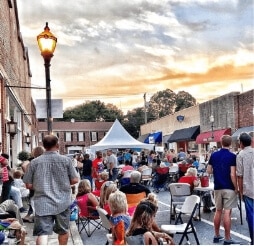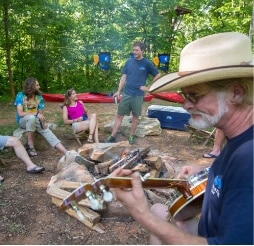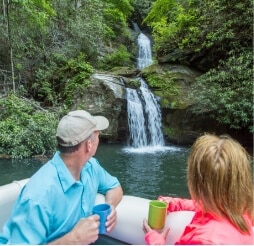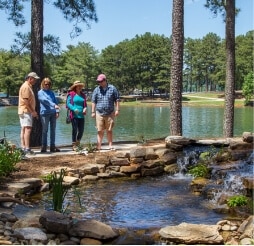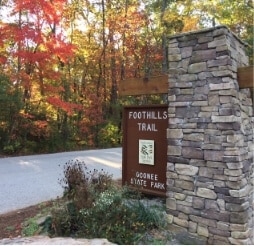BY NORM CANNADA
THE JOURNAL
An exhibit at the Bertha Lee Strickland Cultural Museum in Seneca examines the challenges and impact of African-American women who worked as domestic workers in the Jim Crow-era South. “The Back Door,” which is running through Aug. 15, 2020, looks at the maids and their relationships with their white employers. Museum director Shelby Henderson said the name of the exhibit comes from one of the unwritten rules of the period between 1920 and the mid-1950s across the Southeast. “One of the rules — the unspoken rules — was that you never entered through the front door of the house,” Henderson said of the maids. “It wasn’t a law, but it was kind of an unspoken code of ethics. It’s not a warm, fuzzy exhibit, but it’s a very honest exhibit. I hope it stirs people to reflect and create a safe space to talk about what we consider difficult conversations to have, and I hope we generate conversation between people who never would have talked about it otherwise.”

Henderson’s mother was one of those African-American women working in the homes of white employers during that period.
“The maids blurred those lines because they crossed those lines within those households,” Henderson said. “They had very intimate relationships with the family. They raised the children — in some cases they spanked the children. They were the caregivers.” She said many hours of research went into the effort, reading accounts from maids in “a lot of different neighborhoods, and a lot of different states in the Southeast.” “This exhibit is important because it’s something that many people — probably over (age) 45 — can relate to,” she said. “We’re talking about African-American history, local history.”
“At one point, about 90 percent of all African-American women in the Southeast worked as domestic workers. They impacted society in a way that nobody else could have during that time.”
Lunney Museum director Nick McKinney said there are “life-size” images in the exhibit, helping visitors to be “emotionally impacted.” Audio is used to help visitors connect to the maids as they hear what the women may have been thinking. “It is kind of like a dialogue in their heads as they’re doing chores around the house,” McKinney said. “You get the emotional impact of what they were doing and how they felt about it.”
Three retired teachers — Glenn Abbott and Fred Edgerton from Seneca High and David Johnson, who taught at Pendleton High — volunteered time to create the exhibit, along with Henderson’s daughter, Ivy Henderson Ellerby, a 1998 graduate of Seneca High. Johnson, who taught American history, didn’t grow up in the South, but experienced segregation as a child driving to see relatives in Tennessee. “I saw segregated bathrooms at gas stations and restaurants that wouldn’t serve ‘coloreds,’ as they were called then,” Johnson said. “I experienced it, but I really didn’t understand it as a child.”
“It’s a vital part of American history. I think this exhibit shows it was so widespread, it was such a given in people’s lives, that institutions like this seemed perfectly normal and reasonable to people who were experiencing it, until somehow they didn’t.”
Ellerby, who traveled to help with the exhibit from her home in Columbia, said she felt when she was younger there were different expectations on her because of the color of her skin. “It was kind of an understanding growing up in Seneca that there were just certain places that, as a black person, you knew you didn’t belong,” she said. “Even places like Ram Cat Alley, I knew growing up I had no business being there, being a black person. It was never really spoken, but it was just an understanding of still knowing your position or your place.” She remembered a conversation with Henderson and McKinney that began the talk about the era leading to the exhibit, with the conversations leading to her grandmother and how this life affected her. “It’s ironic that these women would have these amazing dinner parties at this fancy house with all these really expensive dishes and then go to their homes and live with their meager belongings,” she said. “How did that work? How did she do this? How did she live in this world for 15 to 18 hours out of her day and come back to her regular home and be OK with just having regular things? We all sat around and started that conversation, and my interest piqued with this project.”
This article was printed in The Journal newspaper on 9/19/19
It is posted here with permission from author Norm Cannada.
ncannada@upstatetoday.com | (864) 973-6680
 Want to go?
Want to go?
The Back Door Exhibit Runs through Aug. 15, 2020
Bertha Lee Strickland Cultural Museum
208 W. South 2nd St., Seneca
(864) 885-2705
blscmuseum@gmail.com
-
Post Author: Ken Sloan



